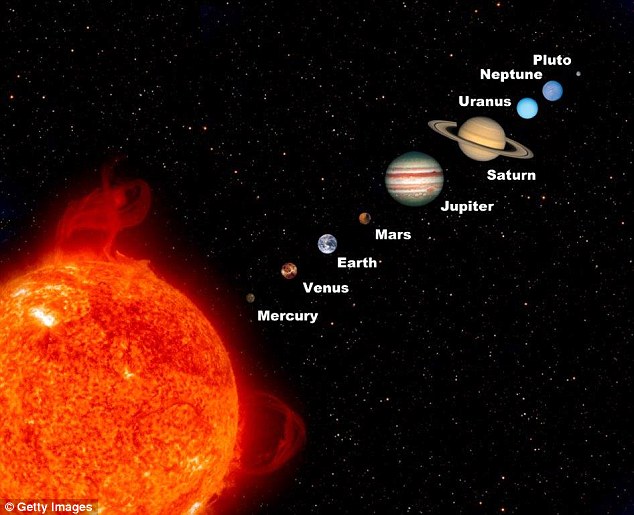
NASA’s Ingenuity Mars Helicopter’s fifth flight was captured on May 7, 2021, by one of the navigation cameras aboard the agency’s Perseverance rover. This was the first time it flew to a new landing site.
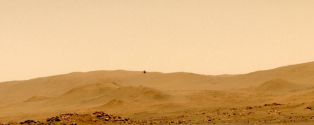
https://www.youtube.com/watch?v=GhsZUZmJvaM&t=294s
The perseverance rover that is now settled on the planet Mars made by the USA:
National Aeronautics and Space AdministrationPage Last Updated: May 10, 2021Page Editor: Sarah LoffNASA Official: Brian Dunbar
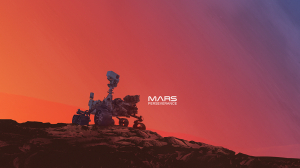 The perseverance robot on planet Mars
The perseverance robot on planet Mars
Media Contacts and Information for NASA:
Latest NASA News Releases
Media Resources
To Subscribe to NASA News Releases
Video: Latest News Briefings
Contact Us:
NASA Newsroom: 202-358-1600
Press Office Hours: 8 a.m. to 5 p.m. Eastern U.S. time
Public Inquiries: 202-358-0001
Interview requests for the NASA Acting Administrator: Jackie McGuinness, 202-568-2330
For non-media requests:
Members of the public wishing to contact NASA should e-mail the Public Inquiries office.
All entertainment, documentary and commercial television productions should contact Bert Ulrich for access to NASA facilities and staff support.
Questions from educators and other non-media inquiries about NASA’s Education programs should be directed to education@nasa.gov or to the appropriate Education Contact.
Here are guidelines on using NASA imagery and video
For media requests
Spanish-language media inquiries: contact María José Viñas
Media looking for supporting still images for their stories should call the NASA Headquarters photo office at 202-358-1900.
Media looking for supporting video for their stories should call NASA Television at 202-358-0309.
Headquarters Public Affairs Officers:
Aeronautics Research Mission Directorate: J. D. Harrington, 202-358-5241
Diversity and Equal Opportunity: Sean Potter, 202-358-1536
Education: Katherine Brown, 202-358-1288
(Questions from educators and other non-media inquiries about NASA’s Education programs should be directed to education@nasa.gov or to the appropriate Education Contact.)
Environmental Management: Karen Northon, 202-527-2606
Human Exploration and Operations Mission Directorate (International Space Station, commercial crew and cargo, Space Launch System, Orion, Lunar Gateway, and future human exploration):
- Kathryn Hambleton, 202-358-1100
- Monica Witt, 202-358-1100
- Stephanie Schierholz, 202-358-1100
- Josh Finch, 202-358-1100
Information Technology/Cybersecurity: Karen Northon, 202-527-2606
Moon to Mars: Cheryl Warner, 202-358-2975
Office of the Chief Financial Officer (Budget, Appropriations, Strategic Planning): Karen Northon, 202-527-2606
Office of the Chief Technologist, Technology Transfer and Spinoffs: Clare Skelly, 202-358-4273
Procurement: Karen Northon, 202-527-2606
Safety and Mission Assurance: J.D. Harrington, 202-358-5241
Science:
- Planetary Exploration, Heliophysics: Grey Hautaluoma, 202-358-0668
- Earth Science: Tylar Greene, 202-358-0030
- Astronomy: Grey Hautaluoma, 202-358-0668; Liz Landau, 202-358-0485
Security (except Information Technology): J.D. Harrington, 202-358-5241
Social Media: Brittany Brown, 202-358-4713
Space Technology Mission Directorate: Clare Skelly, 202-358-4273
Strategic Infrastructure: Karen Northon, 202-527-2606
NASA Center Newsrooms:
Ames Research Center
Ames Research Center conducts critical research and develops enabling technologies in astrobiology, information technology, fundamental space biology, nanotechnology, air traffic management, thermal protection systems and human factors essential to virtually all NASA missions.
Phone: 650-604-4789
Armstrong Flight Research Center
As the lead for flight research, Armstrong continues to innovate in aeronautics and space technology. The newest, fastest, the highest -- all have made their debut in the vast, clear desert skies over Armstrong.
Phone: 661-276-3449
Glenn Research Center
Glenn Research Center develops and transfers critical technologies that address national priorities through research, technology development, and systems development for safe and reliable aeronautics, aerospace, and space applications.
Phone: 216-433-5466
Goddard Space Flight Center
The mission of the Goddard Space Flight Center is to expand knowledge on the Earth and its environment, the solar system and the universe through observations from space.
Phone: 301-286-0697
- Goddard Institute for Space Studies conducts a broad study of global change, an interdisciplinary initiative addressing natural and man-made changes in the environment that occur on various time scales — one-time events like volcanic explosions; seasonal and annual effects such as El Niño; and on up to the millennia of ice ages — and how they affect the habitability of our planet.
Phone: 212-678-5507 - Wallops Flight Facility's vision is to "be a national resource for enabling low-cost aerospace-based science and technology." Wallops' primary technical activities include launching research carriers, such as sounding rockets, balloons, aircraft and small orbital carriers), as well as conducting Earth science research and operating the Wallops Orbital Tracking Station.
Phone: 757-824-1579
Jet Propulsion Laboratory
The Jet Propulsion Laboratory, managed by the California Institute of Technology is NASA's lead center for robotic exploration of the solar system.
Phone: 818-354-5011
Johnson Space Center
From the early Gemini, Apollo, and Skylab projects to today's International Space Station and Orion programs, as well as home to the NASA astronaut corps, Johnson continues to lead NASA's effort in human space exploration.
Phone: 281-483-5111
Kennedy Space Center
Kennedy Space Center is America's gateway to the universe -- leading the world in preparing and launching missions around the Earth and beyond.
Phone: 321-867-2468
Langley Research Center
Langley continues to forge new frontiers in aviation and space research for aerospace, atmospheric sciences, and technology commercialization to improve the way the world lives.
Phone: 757-864-6110
Marshall Space Flight Center
Bringing people to space; bringing space to people. We are world leaders in the access to space, in the use of space for research and development to benefit humanity.
Phone: 256-544-0034
Stennis Space Center
Stennis is responsible for NASA's rocket propulsion testing and for partnering with industry to develop and implement remote sensing technology.
Phone: 228-688-3333
To subscribe to NASA news releases:
Send an e-mail with the word "subscribe" (without quotes) in the subject line to hqnews-join@newsletters.nasa.gov.
To unsubscribe to NASA news releases:
Send an e-mail with the word "unsubscribe" (without quotes) in the subject line to hqnews-leave@newsletters.nasa.gov.
How do I get media credentials?
NASA Headquarters: Media Access Policy (January 2008 draft; PDF)
Kennedy Space Center: Apply Online
Johnson Space Center: Present KSC credentials or call (281) 483-5111.
Jet Propulsion Laboratory: Call the Media Relations Office at (818) 354-5011.
Note: Foreign nationals, including permanent resident aliens, must provide additional information and face earlier deadlines for credentialing. For the latest credentialing deadlines for upcoming missions, see the Media Alerts page.
Breaking News RSS Feed -- Subscribe to automatically download the latest NASA breaking news.
NASA Communications Policy
Budget Information
Please Note: Webmasters are required to offer information and choices to visitors about stor


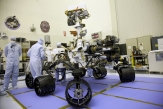

The are are now 8.5 Years Time-lapse of Curiosity Rover Driving & Drilling on Mars [Front Camera View]:
This is a star planet that is about 300 million miles from our planet Earth:
World media
6th April, 2021:
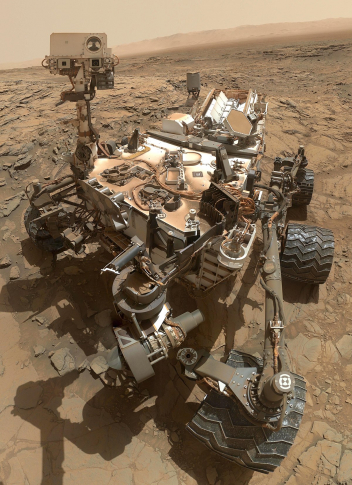 The curiosity rover made in the USA
The curiosity rover made in the USA
Curiosity is a car-sized Mars rover designed to explore the Gale crater on Mars as part of NASA's Mars Science Laboratory (MSL) mission.[2] Curiosity was launched from Cape Canaveral (CCAFS) on 26 November 2011, at 15:02:00 UTC and landed on Aeolis Palus inside Gale crater on Mars on 6 August 2012, 05:17:57 UTC.[5][6][9] The Bradbury Landing site was less than 2.4 km (1.5 mi) from the center of the rover's touchdown target after a 560 million km (350 million mi) journey.[10][11]
The rover's goals include an investigation of the Martian climate and geology, assessment of whether the selected field site inside Gale has ever offered environmental conditions favorable for microbial life (including investigation of the role of water), and planetary habitability studies in preparation for human exploration.[12][13]
In December 2012, Curiosity's two-year mission was extended indefinitely,[14] and on 5 August 2017, NASA celebrated the fifth anniversary of the Curiosity rover landing.[15][16] The rover is still operational, and as of April 6, 2021, Curiosity has been active on Mars for 3081 sols (3165 total days; 8 years, 243 days) since its landing (see current status).
The NASA/JPL Mars Science Laboratory/Curiosity Project Team was awarded the 2012 Robert J. Collier Trophy by the National Aeronautic Association "In recognition of the extraordinary achievements of successfully landing Curiosity on Mars, advancing the nation's technological and engineering capabilities, and significantly improving humanity's understanding of ancient Martian habitable environments."[17] Curiosity's rover design serves as the basis for NA
https://www.youtube.com/watch?v=ETTjKQ5jNbY
CURIOSITY ROVER MARKS SEVEN YEARS OF MARTIAN EXPLORATION

Curiosity has been on the surface of Mars since August of 2012. Photo Credit: NASA
Seven years after successfully completing a difficult landing maneuver onto the floor of Mars’ Gale Crater, NASA’s Curiosity rover continues to make pioneering discoveries on the Red Planet.
The rover landed in Gale Crater on Aug. 5, 2012. This location was chosen after NASA’s Mars Reconnaissance Orbiter (MRO) detected signals of clay at the site, a sign that lakes and streams flowed there billions of years ago. Its mission was to determine whether the planet was once habitable for microbial life, before its climate changed from warm and wet to cold and dry.
Curiosity‘s study of rocks within the 96-mile- (154-km-) wide Gale Crater confirmed it once hosted a network of lakes and streams that could have been habitable for as long as several hundred million years. Over that time, clay minerals were left behind as a result of water interacting with sediment in those lakes and streams.
To date, the rover has traveled a total of 13 miles (21 km), where it studied a variety of terrains. In 2014, it began to climb Mount Sharp, a 3.4-mile (5.5 km) mountain that rises from the middle of Gale Crater.
Unlike NASA’s earlier, solar-powered rovers Spirit and Opportunity, which landed on Mars in 2004, Curiosity runs on nuclear power via a multimission radioisotope thermoelectric generator (MMRTG), meaning it is far less vulnerable to dust storms, which can prevent solar-powered rovers from recharging, causing them to lose power.
Curiosity has been in an extended mission since its primary mission was completed within one Martian year, which equals approximately two Earth years.
Early in its travels within Gale Crater, the rover traveled over gravel and pebbles, terrain too small for drilling. Currently in a high-clay content region along Mount Sharp, the rover has since drilled into the crater’s surface 22 times, Although the drill ran into problems on several occasions, mission engineers successfully came up with innovative techniques to work around these problems.

Curiosity broke two of the raised treads, called grousers, on its left middle wheel in the first quarter of 2017. This included the one seen partially detached on the top of the wheel in this image from the rover’s Mars Hand Lens Imager (MAHLI) camera on the rover’s arm. Photo Credit: NASA/JPL-Caltech/MSSS
Since June of this year, Curiosity has been traversing more complex geological terrains, including “Strathdon,” an area made up of hardened sediment layers. Significantly different from the flatter, thinner layers the rover previously encountered, this region could have been shaped by a combination of both flowing water and wind.
At an outcrop named “Teal Ridge,” whose features also suggest a complex geological history, Curiosity captured a 360-degree panorama.
“We’re seeing an evolution in the ancient lake environment recorded in these rocks. It wasn’t just a static lake. It’s helping us move from a simplistic view of Mars going from wet to dry. Instead of a linear process, the history of water was more complicated,” stated Valerie Fox of Caltech, co-lead of Curiosity‘s clay unit campaign.
The rover is now exploring the clay-rich side of Mount Sharp initially detected by MRO from orbit. Drilled samples there have revealed some of the highest levels of clay minerals Curiosity has found on the Martian surface. However, in a mystery that continues to stump scientists, samples taken from other regions on Mount Sharp, where MRO did not detect large amounts of clay, show similarly high clay levels. One theory is that dust present on the latter, flatter terrain obscured clay signals there far more than it did on the former, which is covered in pebbles.
Recently, Curiosity detected high levels of methane in some parts of Gale Crater’s atmosphere. On Earth, atmospheric methane is produced largely through biological processes, especially by microbes. But methane can also be produced by geological processes, specifically, interaction between hot water and rock, so the presence of the gas does not amount to proof of life.
Curiosity has enough power remaining to operate for approximately another seven years and remains in good health.
Video courtesy of NASA / JPL










